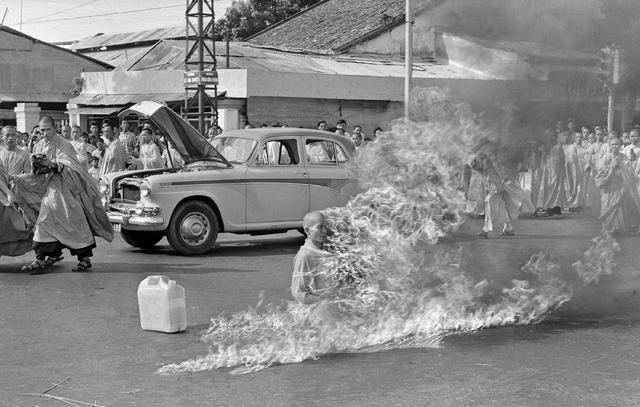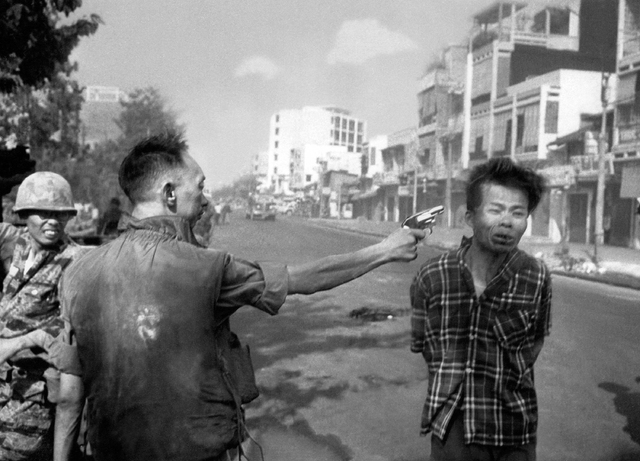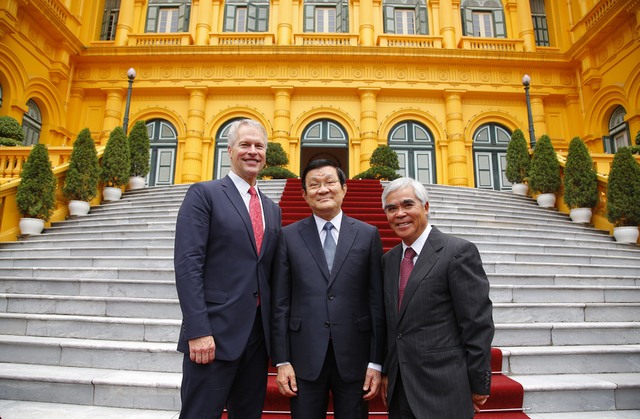HANOI, Vietnam (AP) — They were the images that communicated the horrors of war in ways words could not. ADVERTISING HANOI, Vietnam (AP) — They were the images that communicated the horrors of war in ways words could not. They
HANOI, Vietnam (AP) — They were the images that communicated the horrors of war in ways words could not.
They were so much more than just photographs, Vietnam’s president said on Thursday, recalling black-and-white images he said he will never forget from the war that ended 40 years ago: A Buddhist monk consumed by flames in a fiery suicide. A screaming Vietnamese child running down a road naked, as her skin burns from a napalm attack.
“They gave the whole world a full picture of what was going on in Vietnam,” President Truong Tan Sang told The Associated Press ahead of an exhibit of the AP’s wartime photographs in Hanoi. “I believe these photos made an enormous contribution to bringing the war in Vietnam to an end.”
“Vietnam: The Real War,” a collection of 58 photographs taken by the AP, opens to the public Friday, marking a homecoming that officials say is historic and an emblem of changing times. Forty years after the war ended, it is the first time that the collection is being exhibited in Vietnam, where the conflict is called the “American War.”
The exhibit comes amid a flurry of war-related commemorations. This month marks the 20th anniversary of restored diplomatic ties between the U.S. and Vietnam. Major celebrations marked the recent 40th anniversary of defeating the Americans on April 30, 1975, when northern communist forces seized control of U.S.-backed South Vietnam, ending the war.
AP’s Saigon bureau won six Pulitzer Prizes for its Vietnam coverage, including four for photography. All four are on display among the works by 21 photographers whose pictures are part of the news cooperative’s archive of thousands of wartime photographs.
There was Malcolm Browne’s shocking 1963 photograph of the burning monk, which appeared on front pages around the globe and sent shudders all the way up to the White House, prompting John F. Kennedy to order a re-evaluation of his administration’s Vietnam policy.
Eddie Adams captured the moment a Viet Cong suspect was shot in the head, point blank, by a South Vietnamese commander in 1968.
In 1972, Huynh Cong “Nick” Ut captured the unforgettable image of a screaming 9-year-old girl, after an aerial napalm attack burned the clothes off her body. It is known as “Napalm Girl,” and earned Ut a 1973 Pulitzer and celebrity status in Vietnam.
“AP presented these images of what was really going on in the war. It was through that lens that people around the world gained a better understanding of the conflict,” said Gary Pruitt, AP’s president and CEO, who was in Hanoi to attend a Thursday night preview and the exhibit’s Friday opening.
Hundreds of reporters from around the world covered the more than decade-long conflict, but the AP was especially well represented in both staff size and talent. Their pictures brought the reality of the conflict to the living rooms of America in unprecedented detail and horrifying close-up. Many in the U.S. credited the photos with telling the true story of the fighting in a far-off land and shaping public opinion that helped end one of the most divisive wars in American history.
Part of Pruitt’s message in Vietnam was about the importance of a free press, in a country that still lacks one.
Many of the AP pictures led to “serious tensions” with the U.S. government, he said.
“There were times when the United States government felt the AP’s work was undermining its military effort, and wanted AP to ‘get on the team.’ The team meaning the American military team,” Pruitt said. There was government pressure at times to change reporters and to change coverage. “AP resisted that pressure … AP is there to report the facts and tell the truth, no matter who it upsets and no matter what happens as a result.”
More than 58,000 Americans were killed in the war. The Vietnamese government has said about 3 million communist forces and civilians perished. In one of many indications of the sensitivities that still remain, Vietnam refuses to say how many South Vietnamese soldiers died in the war; some U.S. estimates have put the number as high as 250,000.
The exhibit that runs through June 26 is being held at Hanoi’s Exhibition Hall, after previous runs in New York and London.
———
Associated Press writer Minh V. Tran contributed to this report.
Tagline Text GOES HERE XyXyXy





